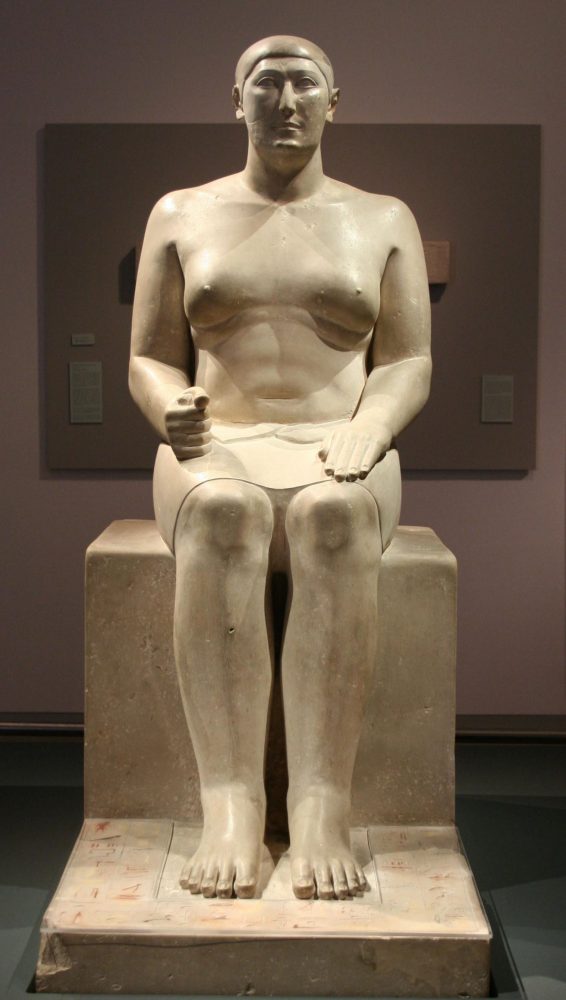4,500 years ago, the Great Pyramid of Giza is believed to have been built on the arid Giza plateau, not far from Cairo. It would remain the tallest structure on the surface of the planet for the following 3,800 years, evidence of the highly developed architectural skills of the ancients. Although scholars argue that the pyramid was built to serve as the tomb of Pharaoh Khufu of the Fourth Dynasty, many experts and writers have argued throughout the years that the structure, as well as other pyramids, were more than just graves for the mighty pharaohs and kings. Despite the fact that we know a plethora of things about the pyramid, resumed into a general query about our knowledge of the structure, our knowledge is limited.
Although there are theories that try and explain how and why the pyramid was built, there still has not been one piece of ancient writing recovered from anywhere in Egypt that explains the process the ancient builders followed to the quarry, transport, and eventually build the pyramids.
Great Pyramid Guesswork
Everything related to the pyramids, or the Great Pyramid of Giza, is circumstantial. Uncertain. Not because people want the pyramids to be much older than what archeologists and Egyptologists are willing to accept, but not because some people want the pyramids to have been built by a long-lost civilization to history. The pyramids and the Great Pyramid of Giza, for this matter, are enough of a mystery on their own. That’s because scholars who venture out and study monuments such as the Pyramids of the Sphinx are dealing with evidence that is mostly circumstantial. We don’t have evidence of any writings that tell us what sort of transportation system was used to get the massive blocks of stone up to the pyramid.
There aren’t any written documents on papyri that tell us how the massive blocks of stone were moved across the sand. We don’t know the exact type of mixture used in the mortar located between the stones at the Pyramid of Giza. We have clues, but we don’t have the entire picture.
Lacking Information
In other words, there is no single way that we can know for sure the date of the pyramids, and everything is by context. Although the ancient Egyptians were excellent record keepers, strangely, they didn’t leave behind any papyri or inscriptions that tell us the purpose of the pyramid. There aren’t any texts or writings that tell us how they did it. We’ve got nothing. And what scholars do have is mostly circumstantial and uncertain. Ultimately guesswork.
Most of what we do know about the Great Pyramid and its surrounding monuments was not found inside the pyramid but rather around it. Since the pyramids are surrounded by ancient Egyptian tombs, inside them, archeologists find valuable pieces of history such as reed, and wood, and wooden coffins, all of which are organic materials. This is the material that can be radiocarbon dated. But it doesn’t tell us directly anything about the pyramid. According to archeologists, the primary way of dating the pyramids is by their position in the development of ancient Egyptian architecture and material culture over a period of more than 4,000 years. In other words, the dating of the pyramid is based on the general understanding we have of Egyptian history and Egyptian archeology.
On the other hand, archaeologists have approximated the age of the Great Pyramid thanks to the boat discovered buried in the footsteps of the pyramid. The wood was radiocarbon dated, revealing it dates back to around 2,600 BC when Pharaoh Khufu is thought to have ruled Egypt. Everything we have is circumstantial. But there are traces and clues hidden beneath the golden sands.
The man behind the wonder
Before the Great Pyramid of Giza was built, before the massive rocks of stone were hewn from the quarries of ancient Egypt before the location was picked, everything had to be planned. Just as today we plan, design, and calculate before laying the foundations for a building, the builders of the Great Pyramid of Giza had to do the same. You can’t possibly build a structure comprising 2.3 million blocks of stone without planning ahead. The builders of the Great Pyramid managed to construct a structure that would stand the test of time. And with a weight of around 6 million tons, the builders made sure the structure would survive almost everything thrown at it.
The Great Pyramid of Giza was a building process unmatched at the time. Researchers have calculated that 5.5 million tons of limestone, 8,000 tons of granite (imported from Aswan), and 500,000 tons of mortar were used in the construction of the Great Pyramid. In terms of logistics, the building of the pyramid was equally a demanding endeavor. To transport massive blocks of stone, the people in charge of the construction site had to make sure that all tasks were performed flawlessly, with minimum delays and issues. Since we know that slaves did not build the pyramid, the workers who built the pyramid were well-paid and cared for in ancient times.

But in addition to the tens of thousands of workers who likely participated in the construction of the pyramid, one man had to have stood behind the entire project. Someone must have planned, designed, and eventually guided the entire building process. And he is a man shrouded in mystery. His name is Hemiunu. And just as we know very little about the Great Pyramid of Giza, very little is known about the man who is considered the designer and architect of the pyramid.
Son of prince Nefermaat, Hemiunu, was the grandson of one of the pioneers of pyramid building in ancient Egypt, Sneferu. Pharaoh Khufu was his uncle. Not much is known about Hemiunu, mostly because his burial place, a mastaba cataloged as G4000, was badly damaged and looted in ancient times. But although nearly all contents were taken from his mastaba, archeologists did manage to recover a life-sized limestone statue measuring 1.55 meters in height. Hemiunu’s mastaba was built not far from the Great Pyramid of Khufu. Inside his mastaba, Hemiunu is described as the hereditary prince, count, and sealer of the king of Lower Egypt and was given the titles of the chief justice and vizier, the greatest of the five of the House of Thoth, but most importantly, he was the overseer of all construction projects of the Pharaoh.
Hemiunu succeeded his father and his uncle as royal vizier. Hemiunu is also believed to have been given the title “king’s son of his body” because scholars argue Khufu saw him more like a son than a nephew. That is why he was particularly respected, as can be seen in the impressive statue of Hemiunu. According to Egyptologists, Hemiunu was a vizier and royal architect, meaning he was in charge and responsible for all royalty-related construction. Given the fact that he was a royal architect during Khufu’s reign, it is argued by scholars that he was the man who would eventually plan, design, and lead the construction of the Great Pyramid.
And it is precisely the title of the overseer of all the pharaoh’s construction projects, of the pharaoh, why scholars now believe he was the mastermind behind the Great Pyramid’s construction. Some experts argue that he is also the man who laid down the foundations of the construction of the pyramids of Khafre and Menkaure. His knowledge about pyramids can be traced back to his grandfather, Pharaoh Sneferu, who is credited with building the Meidum Pyramid, Bent Pyramid, and Red Pyramid. Pharaoh Sneferu is the man who experimented with pyramid design and construction, evidence of which is the Bent Pyramid and the true Red Pyramid.











